Today we’re going to be making chocolate chip cookies. You may be thinking to yourself, “How is making chocolate chip cookies a science experiment?” Well, the process of making and baking chocolate chip cookies involves many scientific processes, and you have a delicious treat at the end of the experiment! These cookies are some of my favorite because they are thick and gooey on the inside while crispy on the outside. Let’s get started!
What you need (the pictures are from a half-batch of the recipe):
Makes: 8 large cookies
- 1 cup unsalted butter, cut into tablespoons
- 3/4 cup light brown sugar
- 1/2 cup granulated sugar
- 2 eggs
- 1 cup cake flour
- 1.5-1.75 cups all purpose flour
- 1 teaspoon baking powder
- 1 teaspoon baking soda
- 1/4 cup oatmeal
- 1/2 teaspoon sea salt
- 2 cups chocolate (I used a mix of chocolate chips and chopped dark chocolate)
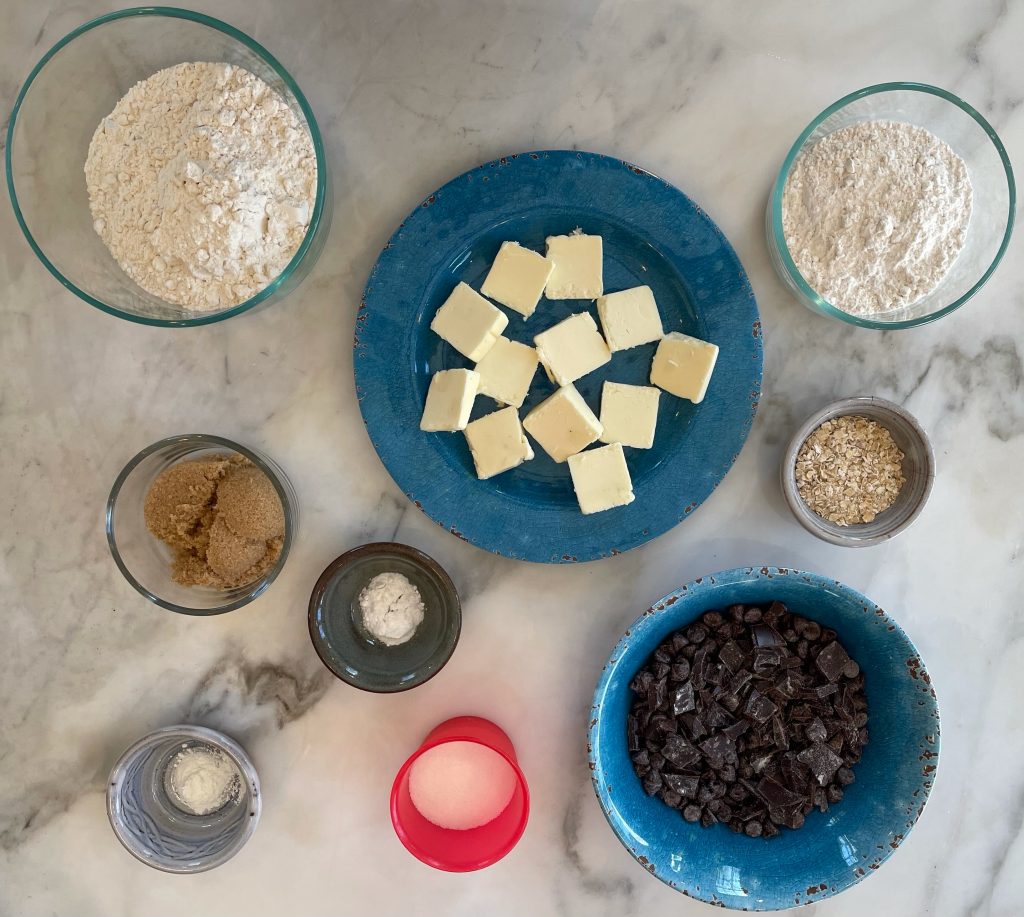
Steps:
- Preheat oven to convection bake 400 degrees and set rack in middle of oven.
- Place butter into bowl and turn mixer on low. If using a stand mixer, use the paddle attachment.
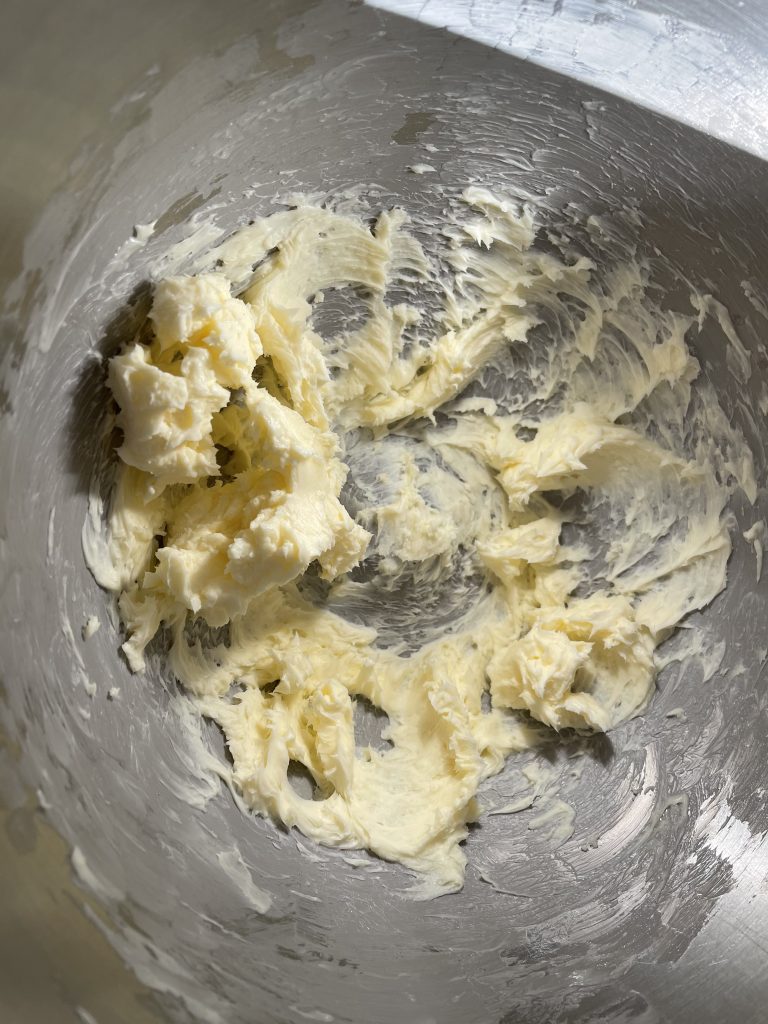
- Add sugars and beat butter until smooth on medium speed. This should take about 1 minute. Mix until the butter pieces are completely blended with the sugar and is no longer visible in pieces.
- Add the eggs and beat on medium just until incorporated with butter and sugars, about 30 seconds.
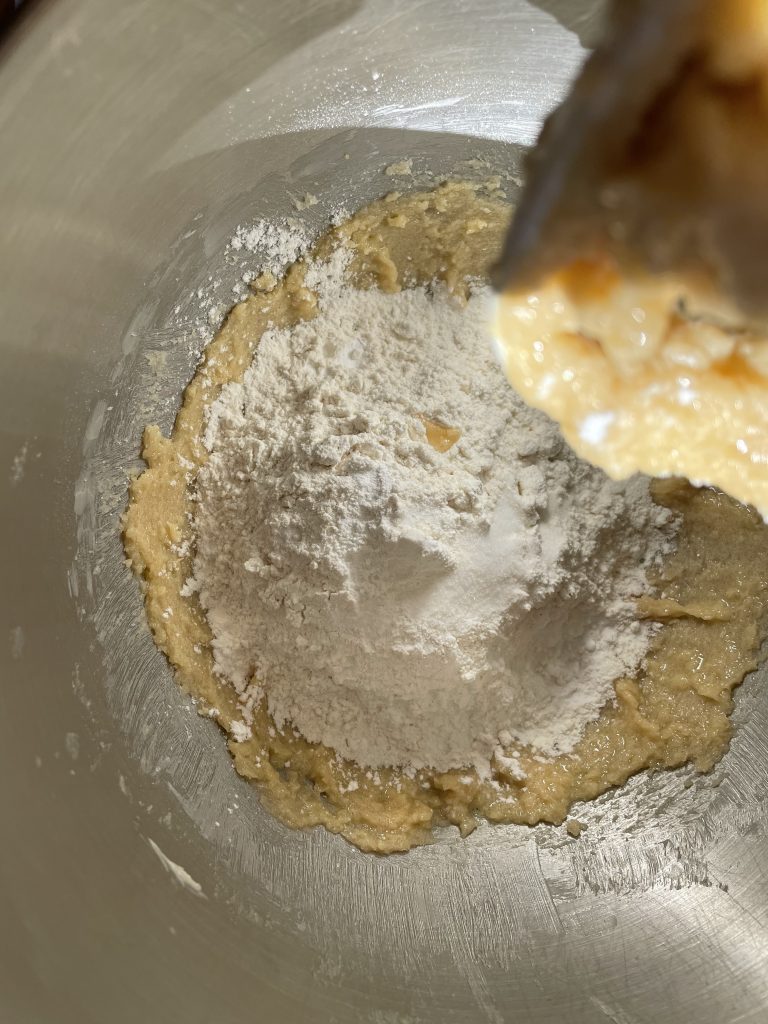
- Turn the mixer off. Add the cake flour, all purpose flour, baking powder, baking soda, salt, and oatmeal. Pulse, or turn the blender on at a high speed for 1-2 seconds at a time, until the wet and dry ingredients are mixed together.
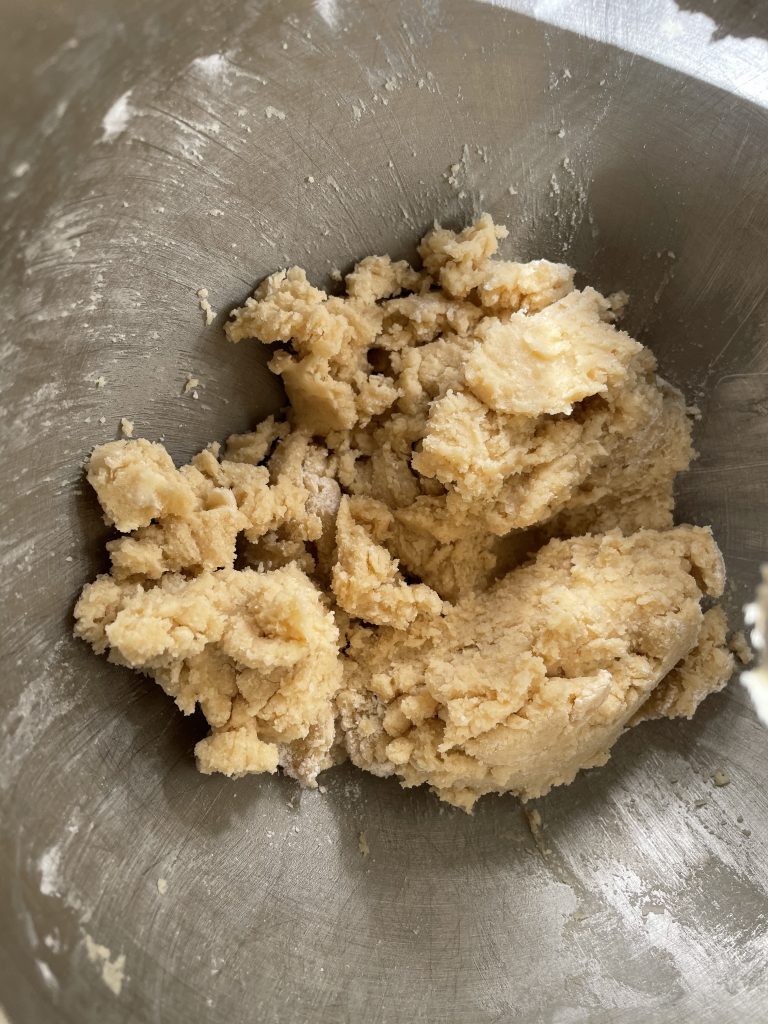
- Pour the chocolate chips into the batter and pulse 5-6 times.
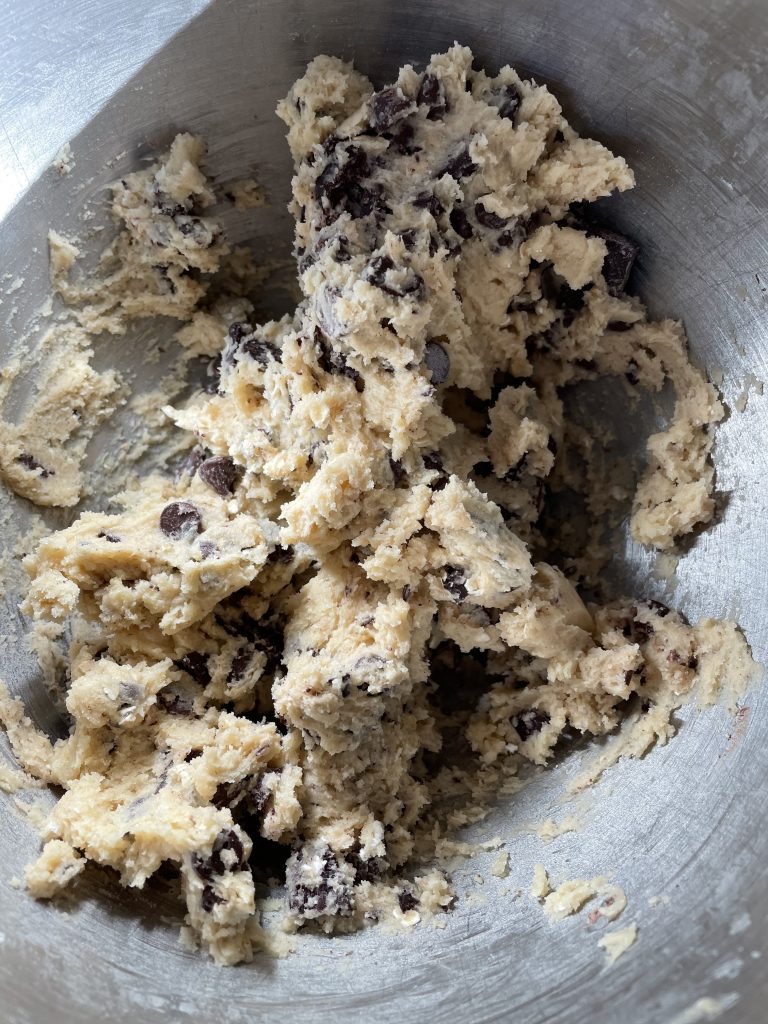
- Pour the batter out onto a clean surface. Fold the dough together a few times until all of the chocolate chips and walnuts are mixed into the batter.
- Divide the dough into 8 equal pieces about 6 oz each. Use your hands to shape cookies. Do not use a cookie or ice cream scoop. The cookies are meant to be roughly shaped. Do not flatten the dough.
- Bake 4 cookies per pan, for 11 minutes on regular bake or 400 convection bake for 8-9 minutes.
- The cookies are done when the top is a bit golden and the bottom is also golden.
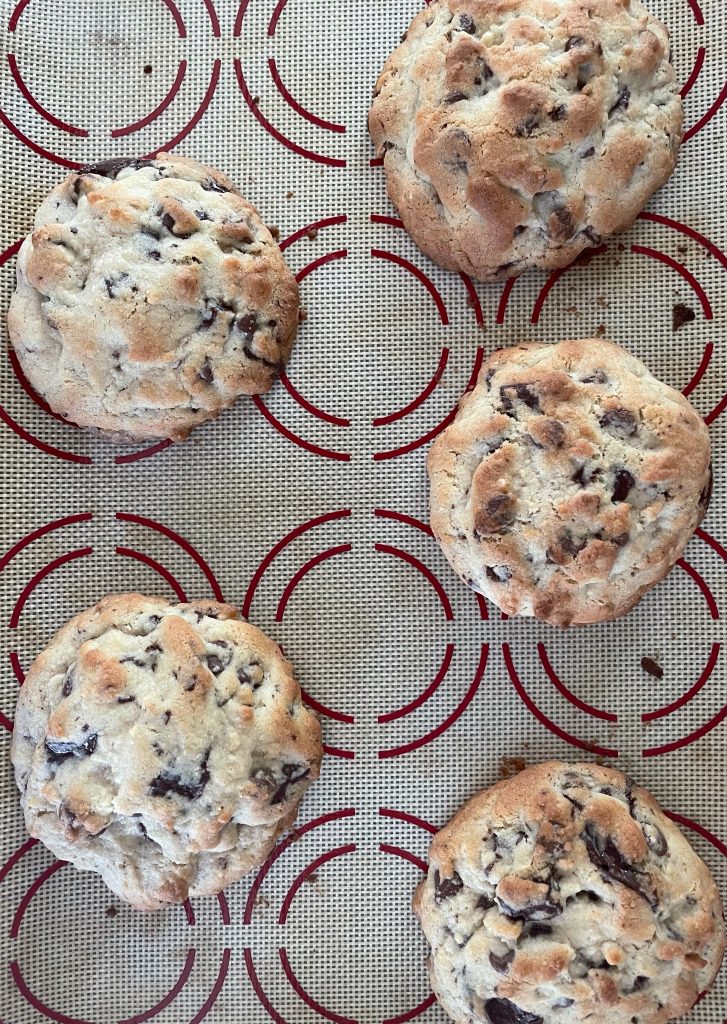
- Do not over bake. Let cool for 15 minutes before serving.
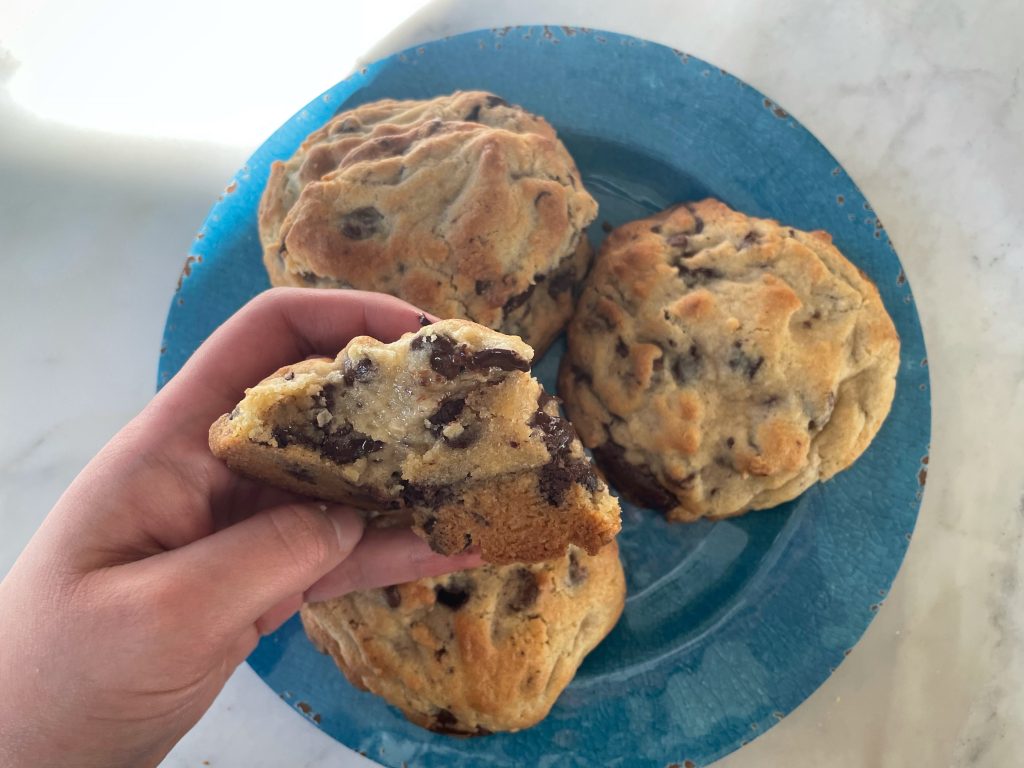
So, how does baking cookies involve science?
There are many different steps of baking cookies that involve science! Here they are:
- When you put the cookie dough in the oven, the heat of the oven transfers energy to the cookie dough. This energy makes the molecules in the cookie dough move faster, making the dough become thinner and spread out.
- The cookie initially spreads out, but soon begins to rise. About 15% of butter is water, so when the butter melts, some water is released and dissolves the baking soda. The baking soda then reacts with the acidic aspects of brown sugar and releases gases that cause the cookies to rise.
- As the cookie dough gets hot, the proteins in the egg and the hydrated starches set in structure, which gives the shape and size of the cookie.
- The sugar granules in the cookie begin to melt together, initially becoming liquid before starting to caramelize, or harden, giving the slightly crunchy and caramel-tasting parts of the edges of the cookies.
- Additionally, the Maillard reaction reaction occurs. In this reaction, the proteins in the flour and the eggs begin to brown with the sugar which gives the cookies brown crusts.
- Once we take the cookies out of the oven, they begin to cool, and the liquefied sugar hardens and gives the cookie a crisp texture around the edges. The air inside the cookie also cools, and the cookie deflates slightly.
Recipe adapted from A Bountiful Kitchen, https://abountifulkitchen.com/levain-bakery-chocolate-chip-cookie-recipe/
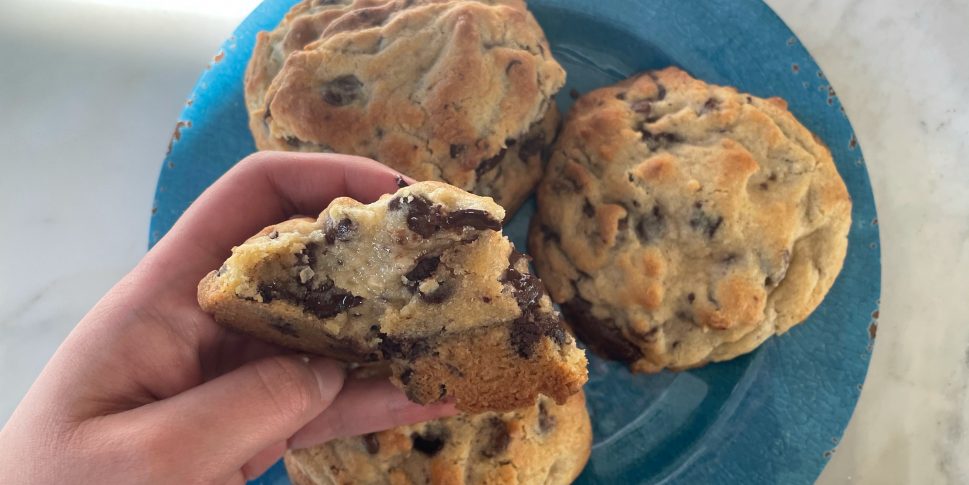
Bailey
Awesome recipe!